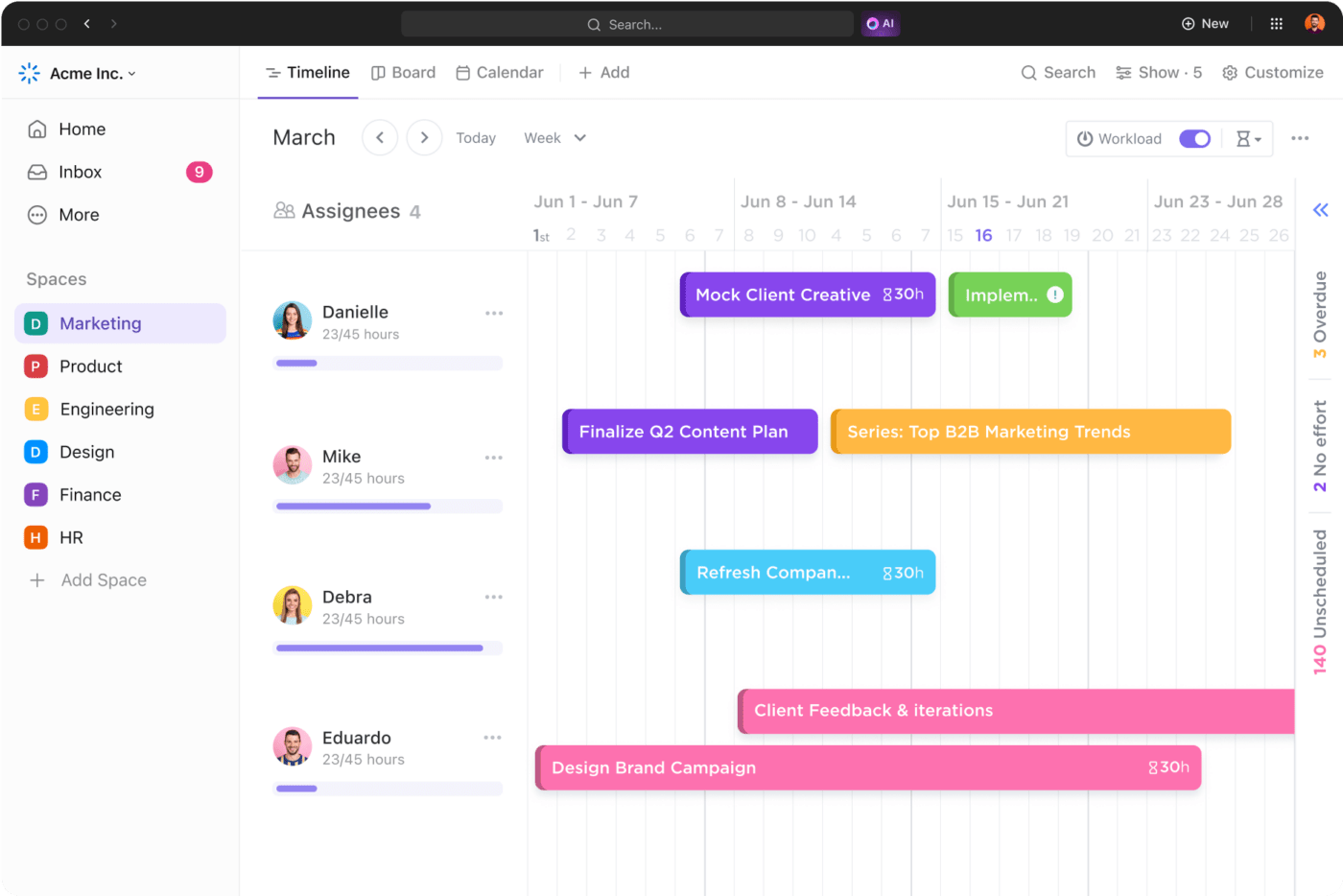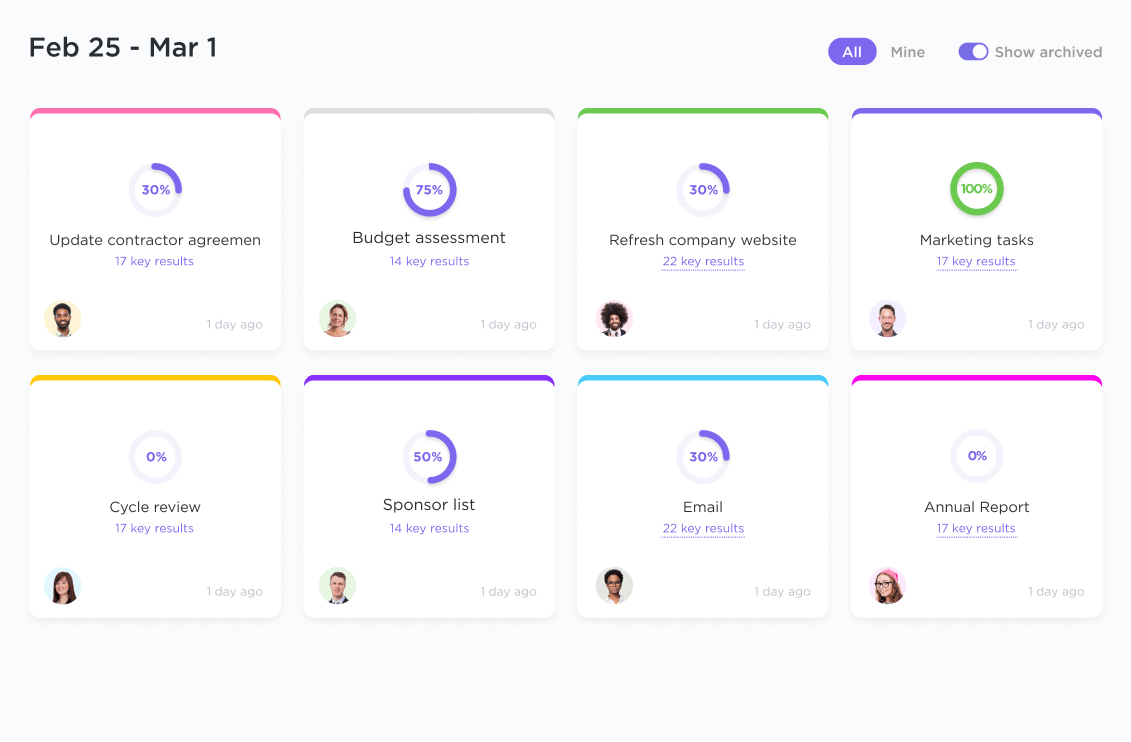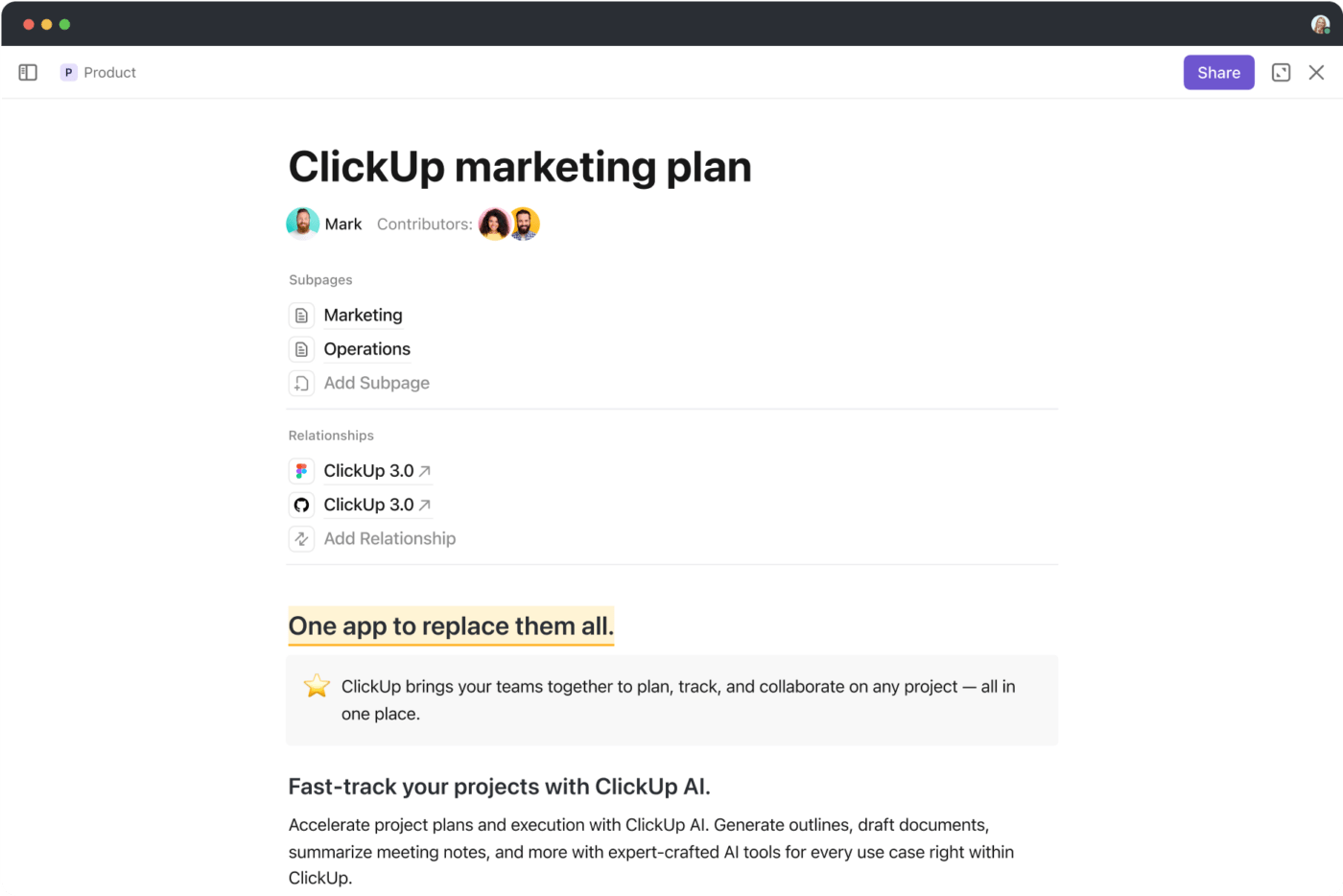Individual Contributors: The Unsung Heroes of High-Performing Teams

Sorry, there were no results found for “”
Sorry, there were no results found for “”
Sorry, there were no results found for “”
Some managers are born, others are made. And then there are those who choose to stay out of management entirely. After all, herding a colorful cast of characters in a diverse team setup may not be your cup of tea—and that’s okay.
You’d rather just do your own thing and call it a day minus the management responsibilities. But working alone doesn’t mean that your career has hit a dead end. If anything, individual contributors (ICs) drive efficiency and innovation within organizations.
So, if you’re on the lookout for a career that balances autonomy and expertise, read on. We’re about to explore the work of individual contributors, unpacking the essential skills, career paths, challenges, and strategies to thrive in this fulfilling and rewarding role. So, read on to learn how to become an individual contributor.
Not all heroes wear capes—some code, write killer copy, or design stunning visuals.
These are your individual contributors.
As the name suggests, an individual contributor is one who independently supports the organization’s goals and mission. They save the day by swooping in with specialized talent and expertise, focusing on completing specific tasks within a project or an organization.
They may function individually or as a part of the team structure with someone to report to in a hierarchy. However, they are not responsible for managing anyone else except for themselves. At best, they collaborate with different teams and share their knowledge and insights wherever appropriate to drive successful outcomes.
Now that you understand who an individual contributor is, let’s dig deeper into what constitutes individual contributors. To do this, let’s view them through the lens of individual contributor skills, characteristics, and qualities. Here’s a quick walk-through of what makes a good individual contributor:
Individual contributors are subject matter experts. As such, they possess deep knowledge and cultivate areas of expertise. This could be a programming language in the case of developers, financial analysis software for an accountant, or a design tool for a graphic designer—you get the gist. Such specialized skills enable them to:

Staying on top of deadlines and efficiently managing deadlines requires sharp organizational skills. Without this critical skill, chaos would reign supreme — especially if the individual contributor is involved in multiple tasks and projects. By staying organized, individual contributors can:
Individual contributors have to juggle multiple tasks without constant supervision. At the same time, they must meet respective deadlines and always deliver to expectations. This means that organization is just one part of the skills they must possess. Individual contributors must also have the self-management skills to thrive independently as it will:

While individual contributors may not occupy managerial positions, they’re still a part of the team—or at least have to work closely with one. This means that they must possess strong communication skills to work alongside other team members. Clear and concise communication is a key soft skill that:
Despite their independent work style, individual contributors don’t function in a vacuum. They are responsible for specific tasks or outcomes, which would require them to collaborate with other teams. They also understand their role in the larger set of objectives. Here’s where team collaboration comes into play:
Consistency is the hallmark of successful individual contributors. It demonstrates how their positive results are not occasional bursts of brilliance or a stroke of luck but based on the reliable delivery of high-quality work time and again. When you deliver consistent results, you:
As we’ve mentioned before, individual contributors discover innovative ways to solve problems. This stems from their expertise in their domain, with problem-solving acting as a key trait to consolidate the individual contributor role. Their critical thinking and problem-solving skills help in:

Successful individual contributors go beyond completing assigned tasks. Their ability to undertake complex initiatives and absolute task ownership helps them:
Even though they possess specialized knowledge, individual contributors must keep up with the ongoing trends and requirements of their respective areas of expertise or industry. This bolsters their individual contributor role as they can:
Given the above skills and qualities of individual contributors, here’s a summary of what they bring to the table:
The journey of an individual contributor involves honing specialization, cultivating expertise, continuous learning, and increasing organizational impact. Here’s an illustration of a typical individual contributor career path:
| Job Titles | Level 1: Entry-Level IC | Level 2: Associate IC | Level 3: Mid-Level IC | Level 4: Senior IC | Level 5: Principal IC |
| Focus | Developing foundational skills | Applying foundational skills and gaining experience | Expanding skillset and working on more complex projects | Deep specialization to become a subject matter expert | Thought leadership and strategic influence |
| Responsibilities | Completing assigned tasks under close supervision | Independently completing assigned tasks and contributing to small-scale projects | Leading projects on a small scale, mentoring junior colleagues, and contributing to strategic decisions | Managing complex projects, troubleshooting critical issues, and guiding junior and mid-level ICs | Leading large-scale initiatives, mentoring senior ICs, and contributing to the industry through thought leadership |
| Experience | Freshers with minimal experience | 1-2 years of experience in the field | 3-5 years of experience in the field | 5+ years of experience in the field | 8+ years of experience in the field, along with recognized expertise |
| Key Skills | Understanding job requirements Following instructions Basic functional or technical skills relevant to the field | Proficiency in core skills Problem-solving for routine tasks Basic communication and collaboration | Advanced functional or technical skills Problem-solving for complex tasks Effective communication and collaboration | In-depth expertise Innovative problem-solving Strong communication and collaboration skills Influence decision-making | Unparalleled expertise Strategic thinking Exceptional communication and collaboration skills Potential leadership qualities |
| Examples | Junior Developer Content Writing Assistant Graphic Design Intern | Web developer Content Marketing Associate Graphic Designer | Software engineer Content Marketing Specialist Senior Graphic Designer | Lead Developer Content Marketing Manager Creative Director | Technical Architect Head of Content Marketing Design Principal |
While you may notice some overlap between individual contributors and first-time managers, the two profiles are vastly different. Just because an individual contributor possesses mastery over a specific skill doesn’t automatically promote them to a managerial role. Similarly, managing projects doesn’t automatically make someone an individual contributor.
Here’s a high-level comparison between individual contributors and managers:
| Feature | Individual Contributor | Manager |
| Primary Focus | Functional or technical expertise in a well-defined field of work | Team or project management and leadership |
| Key Responsibilities | Completing the assigned task or project | Assigning tasks, monitoring progress, building a team and guiding it, capacity building, etc. |
| Critical Skills | Deep functional/technical skills Problem-solving Communication Collaboration | Leadership skills Delegation Conflict resolution Emotional intelligence Motivation People management |
| Supervision | Operates independently with minimal supervision | Manages a team of ICs |
| Career Path | Advancements based on expertise and individual contributions | Advancements based on leadership qualities and project management capabilities |
| Progression | Deeper specialization, which may transition to leadership roles | Team leadership, which may transition to senior management roles |
| Impact | Contributes through individual outputs | Contributes through individual efforts and team performance |
| Examples | Software Developer Content Writer Graphic Designer | Project Manager Head of Content Team Lead |
Even though the role of an individual contributor and manager is distinct, it carries certain similarities. This opens up the possibility to go from individual contributor to people manager and vice versa.
Here’s how you can go about it:
You can climb the corporate ladder to go from being an individual contributor to a management role by:
While uncommon, you may choose to revert from a manager to an individual contributor role by:
Individual contributors form the backbone of every organization. However, that’s not to say that their path is not riddled with obstacles. Here’s a closer look at some of the key challenges they face, along with some possible solutions:
Staying self-motivated and engaged can be a significant challenge to ICs, especially for those who crave a strong sense of purpose. While they recognize the importance and impact of their work, the absence of a formal leadership job title may leave them wanting more. They may feel like they’re living under the shadows of their manager, who will get credit for their individual contributions. Such lack of visibility, paired with the lack of structure to their professional development, may dampen motivation.

Individual contributors often thrive on autonomy and deep focus. However, they are also meant to collaborate with other team members. Striking this perfect balance between independence and interdependence can get tricky.
On the one hand, it may result in siloed work and missed opportunities for knowledge sharing. On the other hand, getting involved in too many collaborative tasks can throw ICs off their game by preventing them from reaching deep focus.
While ICs may focus their effort and expertise on a particular project or task, gaining the required recognition from stakeholders or project leaders can be a cutthroat fight for attention. Their accomplishments, big or small, may easily get buried, especially for large and complex projects involving several team members. Not gaining the credit they deserve may discourage and disengage them and hamper their career development.
Certain fields and industrial sectors are in a state of flux. This dynamic nature puts pressure on the IC to evolve continuously with changes in the industry. From keeping up with the trends to upgrading the skillset, staying relevant in a fast-paced environment is extremely exhausting. Squeezing in the time to upskill while juggling deadlines and workloads hinders growth at either end.

Individual contributors have to take charge of several things—deadlines, deliverables, and quality. Managing these along with their workloads may brew a continuous struggle. ICs may quickly feel flooded, stressed, and overwhelmed without time management and organization skills. This cripples their ability to deliver top-notch work and feeds burnout.
Although ClickUp is well-known for its project management prowess, there’s more to it than just that. For instance, it can be a powerful self-management tool for individual contributors, allowing them to excel in their respective fields.
Being a TL, you have to monitor the work done by others, and ClickUp makes it easier to manage the task, workload, etc. Also, helped me in presenting the performance of the team as well as the individual performance of the members.
Here’s a breakdown of how ClickUp helps individual contributors achieve more:

ClickUp makes organization a breeze. You may create dedicated Spaces for different projects and list their respective tasks. Break down complex tasks into smaller, more manageable subtasks and assign deadlines and priorities to them. This helps you create a clear roadmap of your day-to-day work and ensures that nothing slips through the cracks.
Plus, the multiple Views on ClickUp allow you to visualize your workload your way. From Kanban-style boards to interactive lists, ClickUp truly enables ICs to work independently and autonomously!

Do you feel like your individual contributors go underappreciated? Try ClickUp Goals. These tie the IC’s personal and professional goals with the overarching organizational goals. Gaining visibility into how your individual contribution culminates into business success will prevent you from feeling like a cog in the wheel and motivate you to do more.
At the same time, the ability to track goals allows project managers to celebrate milestones and achievements. This encourages ICs to accomplish more and commit to self-improvement.
Also Read: How to set goals for your team using ClickUp

ClickUp is the very foundation of collaboration. For starters, you have the ClickUp Chat View that allows you to chat with other team members in real time. Use it to obtain instant inputs or share progress updates. You can even turn messages from the Chat View into tasks and add them to your list.
Similarly, you have ClickUp Whiteboards, where you can collaborate with your team to build interactive mind maps and flowcharts. ClickUp brings all stakeholders together, regardless of their location.
Eliminate the need for lengthy written explanations with ClickUp Clips. Record your screen to visually demonstrate ideas, provide feedback on tasks, or walk through processes. Clips helps you give updates quicker and clearer, freeing up valuable meeting time for more in-depth discussions.

Pro tip: Use ClickUp Brain to transcribe the recordings made with ClickUp Clips. You can also add comments directly to the Clips for further discussion and keep everything organized within ClickUp.

Knowledge sharing is one of the key responsibilities of an individual creator. To facilitate this, experienced ICs can use features like ClickUp Docs to create a centralized repository of essential documents.
From easy-to-navigate Wikis to Standard Operating Procedures (SOPs), ClickUp Docs hosts an assortment of documents required to train, enable, and empower the next generation of ICs. These docs also double as collaboration tools as teams can come together to create, edit, and organize them!

ClickUp makes workload management less of a load. ClickUp’s Team and Personal Views grant a bird’s-eye view of all the assigned tasks across different projects. This allows ICs or managers to view workload in context and identify any potential bottlenecks or resource competition even before they arise.
The ClickUp Dashboards allow ICs, teams, and managers to keep a finger on the pulse of project execution. This central hub displays key metrics like deadlines, work completion rates, etc., to highlight areas that require personal attention or intervention.
ClickUp not only allows me to keep projects on track and detect risks early, it also helps me as an individual contributor with my daily tasks.

ClickUp Brain delivers an elevated experience to individual contributors. It is a virtual assistant that anticipates their needs, uncovers relevant information across various projects and documents, and streamlines communication.
With this combination of capabilities, ClickUp Brain empowers ICs to work smarter, not harder. By offering contextual suggestions, improving their writing, facilitating knowledge sharing, and automating repetitive tasks, ClickUp Brain unlocks a new plane of efficiency that frees up ICs to focus on more high-value tasks.
Given that ICs are the foundational building blocks of any growing organization, great leaders often focus on developing a nurturing environment for them. Here’s what they do to create a supportive work environment for individual contributors:
The role of an individual contributor is multi-faceted, which is why they exist across industries and businesses of all shapes and sizes. It requires specific functional and technical expertise, problem-solving skills, and the ability to thrive in an environment that blends autonomy with collaboration.
While challenges like diminished visibility and dynamic changes in the industry persist, there are ways to overcome them.
Investing in the right tools can amplify ICs’ impact on business outcomes. Platforms like ClickUp are great enablers of their success and yield multi-fold returns on the initial investment.
ClickUp helps ICs visualize their roles and impacts. It also allows teams to collaborate for improved performance.
Most importantly, ClickUp is as versatile as an individual contributor. This allows the tool to adapt to changing requirements while fueling a learning culture. Together, they can propel a business to new heights.
Sign up for free today to witness the transformative role of ClickUp!
An Individual Contributor (IC) may exist in various departments across different organizations. Here are a few examples:
You can achieve your career goal of becoming an individual contributor by:
Absolutely! Embarking on a journey to become an individual contributor leads you through an exciting path that offers opportunities for:
These make individual contributions one of the most highly sought-after career goals.
Qualities of a great individual contributor include:
The role of an individual contributor may exist at various levels within an organization—from entry-level to senior experts. The specific level depends on the skills required, relevant experience, and the impact within the organization. One can even transition into managerial roles after acquiring a wider skill set.
© 2025 ClickUp